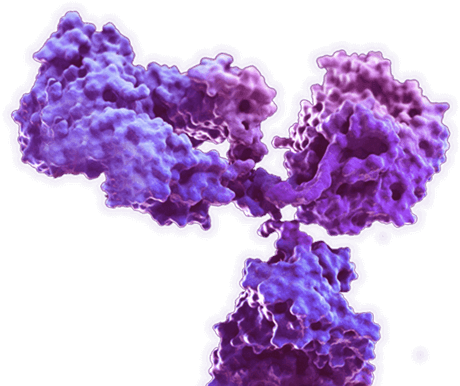AibGenesis™ Mouse Anti-Atxn7 Antibody (CBMOAB-02085FYA)
Cat: CBMOAB-02085FYA

Certificate of Analysis Lookup
To download a Certificate of Analysis, please enter a lot number in the search box below. Note: Certificate of Analysis not available for kit components.
Lot Number
To download a Certificate of Analysis, please enter a lot number in the search box below. Note: Certificate of Analysis not available for kit components.
Lot Number
- Product List
- Specifications
- Application Information
- Target
| Sub Cat | Clonality | Species Reactivity | Application | Clone | Conjugate | Size | |
| CBMOAB-02085FYA | Monoclonal | Fruit fly (Drosophila melanogaster), Frog (Xenopus laevis), Rhesus (Macaca mulatta) | WB, ELISA | MO02085FYA | 100 µg | ||
| CBMOAB-36641FYA | Monoclonal | Rhesus (Macaca mulatta) | WB, ELISA | MO36641FYA | 100 µg | ||
| MO-AB-01224W | Monoclonal | Rhesus (Macaca mulatta) | WB, ELISA | MO01224W | 100 µg | ||
| MO-AB-01761H | Monoclonal | Frog (Xenopus laevis) | WB, ELISA | MO01761C | 100 µg |
Specifications
| Host species | Mouse (Mus musculus) |
| Species Reactivity | Fruit fly (Drosophila melanogaster), Frog (Xenopus laevis), Rhesus (Macaca mulatta) |
| Clone | MO02085FYA |
| Specificity | This antibody binds to fruit fly Atxn7. |
| Format | Liquid or Lyophilized |
| Storage | Store at 4°C: short-term (1-2weeks) Store at -20°C: long-term and future use |
| Purity | > 90% was determined by SDS-PAGE |
| Purification | Purified with Protein A or G affinity chromatography |
| Cellular Localization | Nucleus; Other locations |
Application Information
| Application | WB, ELISA |
| Application Notes | ELISA: 1:1000-1:3000 Other applications are to be developed. The optimal dilution should be determined by the end user. |
Target
| Introduction | The autosomal dominant cerebellar ataxias (ADCA) are a heterogeneous group of neurodegenerative disorders characterized by progressive degeneration of the cerebellum, brain stem and spinal cord. Clinically, ADCA has been divided into three groups: ADCA types I-III. ADCAI is genetically heterogeneous, with five genetic loci, designated spinocerebellar ataxia (SCA) 1, 2, 3, 4 and 6, being assigned to five different chromosomes. ADCAII, which always presents with retinal degeneration (SCA7), and ADCAIII often referred to as the 'pure' cerebellar syndrome (SCA5), are most likely homogeneous disorders. Several SCA genes have been cloned and shown to contain CAG repeats in their coding regions. ADCA is caused by the expansion of the CAG repeats, producing an elongated polyglutamine tract in the corresponding protein. The expanded repeats are variable in size and unstable, usually increasing in size when transmitted to successive generations. This locus has been mapped to chromosome 3, and it has been determined that the diseased allele associated with spinocerebellar ataxia-7 contains 37-306 CAG repeats (near the N-terminus), compared to 4-35 in the normal allele. The encoded protein is a component of the SPT3/TAF9/GCN5 acetyltransferase (STAGA) and TBP-free TAF-containing (TFTC) chromatin remodeling complexes, and it thus plays a role in transcriptional regulation. Alternative splicing results in multiple transcript variants. (From NCBI) |
| Product Overview | Mouse Anti-D. melanogaster Atxn7 Antibody is a mouse antibody against Atxn7. It can be used for Atxn7 detection in Western Blot, Enzyme-Linked Immunosorbent Assay. |
| Alternative Names | Ataxin 7, isoform A; Ataxin 7, isoform B; Ataxin 7, isoform C; Ataxin 7, isoform D; LD40170p; Atxn7 |
| UniProt ID | Q9VQB6 |
| Protein Refseq | The length of the protein is 971 amino acids long. The sequence is show below: MPLNDVAPAGGGAYPENGTKHKVSGMWKPDSSAGSNSGSGSAGLSLFSLQGQKWQQVFDMEKVIKQLRTAEKTYLRGGKNSSAGADQQAKVQVQRLQSADMAYYDLAPKLASRDIVLCSSCSGCYTKAGFQHHIALQHPSVWEATSSKVNPNPNGTAISSDSRLTATEISQEGGAIVPSSPTDTLSASTLSSCSNGSSSSASLQHPAAAGSSSTTSSSSSSRHKSSSSKSSSSSSSKGSSSTSAGSRSRSKSSKNRHHSSPAPALLESNHKESKGSKKSSAIAAPPVVAAVVKEEPPSVGAAPAAITMFSSSSNSSCSLPPTPTLGAASSEVAMGVNYSPAQLQTDAEKLPELQPKKKLKGSSDHRIKAEKEKNKDKSLVNSYEQQQVLSELDQAVSSITGAVSAEQVAPDEEELPLPNTSDENSISQTLDEMLDSKLINEILNNFDESALDTSQQQSQQQAQNGSLSHPAQATKRLRFEDGTIGEDYAVYQQQAVQQVYGEEEHQQELTTIDAMQLQQLIYQQQQMLEQQQLQEQQQQQQQDQKLQDHEQQRQFSVYNVPSLTDEAMVNPQQQQLEEHMILPSIIYEITESNPVSMLEQKVLAEFLTNAGYENVDVNVVQSGGIQTNLSSGTEANQLADELADFEFSKLETVSDTVKTVKLEAKAASQPPTTNPQINHHPSLANAKYHEDSYFNVMLYSGAPRPLAMNTFGMVKLPQGLGVTFRKNLLTTRKANNNLLSLSGGNHLGVVGQLARTPPPPSPALSNGLPGKNPASGRTIYAQRSNVIAQDRLRCNKRALVGGKAGGGSSGSPGVMTAKRLNELLMGKAKKEEKPPPDSEDGGEQPTKDKERDKEEDNKLTFSFYEKRRRLLAGKLEQLQPLGRPSFTLPLQSNHNASQSQSHSPQQLLKKQLLRTLSDSSSNMNISNMNNISNLNSSNTPSANSNPPWKGNSSNPGGNSTPTSSDLMRVFV. |
For Research Use Only | Not For Clinical Use.
Online Inquiry

